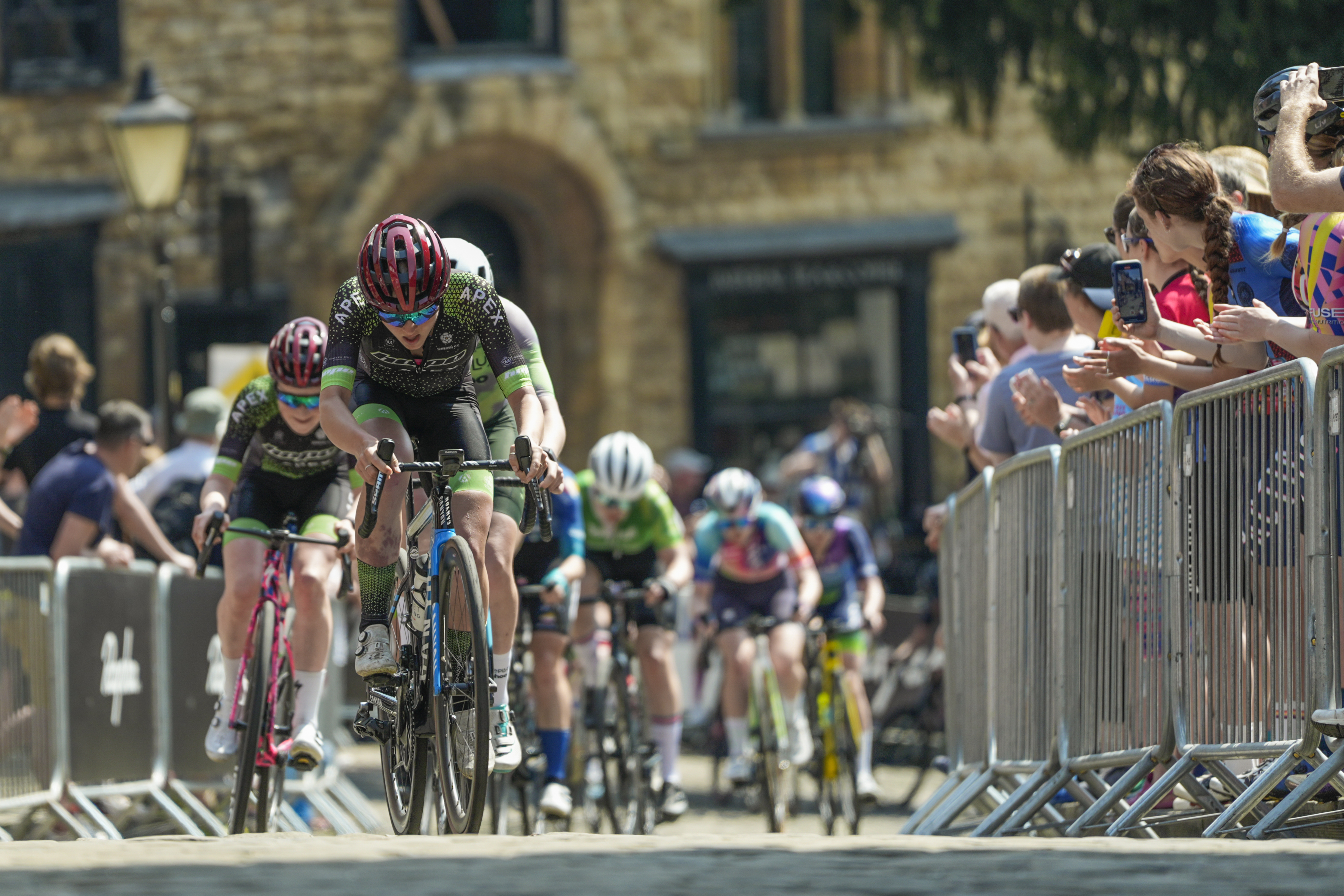UCI to clamp down on extreme brake lever position
The angle of riders’ brake levers will be closely monitored from next season


The UCI has announced plans to clamp down on riders turning in their handlebar hoods from 2024.
In recent years, many riders have tilted their hoods inwards, forcing them to narrow their body’s frontal area and creating a more aerodynamic position. However, when taken to the extreme the change can make it more difficult to grip the hoods and some in the peloton have called the trick “stupid” and “dangerous”.
The UCI has now said it will impose restrictions on the angles used.
In a statement shared on Thursday, the UCI wrote: "Positioning the levers with an extreme inclination limits the braking capacity of the riders and constitutes a modification of the product beyond its intended use.
"Such positioning will be restricted in 2024. In 2025, new regulations will come into force requiring compliance with the installation guidelines established by brake lever manufacturers."
Cycling Weekly has seen an unpublished document entitled ‘2024 regulation changes’, which appears to show a new tool the UCI will use to measure what it calls “brake lever inclination”. The tool wraps around the hood, enforcing a limit on the tilted angle of around four or five degrees.
One industry expert, who asked to remain anonymous, told Cycling Weekly that the rule change “should not come as a surprise”.
Get The Leadout Newsletter
The latest race content, interviews, features, reviews and expert buying guides, direct to your inbox!
“Turning your levers in is ridiculous and dangerous and stupid,” they said. “It’s a safety thing, basically. If you turn your levers in at 90 degrees, like some of these juniors are doing, you cannot reach the brakes, you cannot change gear. Yes, you might have a very nice aero-looking position when you’re on the hoods, but the rest of the time, you can’t climb safely, you can’t hit the brakes properly.”
Speaking to Cycling Weekly earlier this year, UAE Team Emirates rider George Bennett said turned-in levers had already caused incidents in races.
“What sh*ts me is that when everybody slams on their brakes fully, they can’t use their brakes,” Bennett said. “I buy into [the aero argument], it works, it saves watts, but saving watts is only one thing. I like using my brakes.”
Rider adjustments to brake hoods became more prominent after the UCI outlawed the puppy paws position - in which a rider rests their forearms on the handlebars - in April 2021. The following month, Taco van der Hoorn of the then-named Intermarché-Wanty-Gobert Matériaux soloed to victory on his Grand Tour debut at the Giro d’Italia, his aero-optimised hoods attracting attention.
Bahrain Victorious rider Pello Bilbao then adopted an even more extreme angle in a road bike time trial at the Tour Down Under this January.
According to CW’s industry source, this safety issue is not limited to pro riders. “I feel as though this is a perception issue that will trickle down to the more susceptible-to-influence juniors,” they said. “If you’ve got an entire field of juniors doing this, it’s going to be a complete nightmare, and people are going to hurt themselves.
“For the UCI to crack down on something that people might do, which is less safe, before there’s an issue, I think is a good thing.”
Cycling Weekly approached the UCI for comment, but the governing body did not respond.

Thank you for reading 20 articles this month* Join now for unlimited access
Enjoy your first month for just £1 / $1 / €1
*Read 5 free articles per month without a subscription

Join now for unlimited access
Try first month for just £1 / $1 / €1

Tom joined Cycling Weekly as a news and features writer in the summer of 2022, having previously contributed as a freelancer. He is fluent in French and Spanish, and holds a master's degree in International Journalism. Since 2020, he has been the host of The TT Podcast, offering race analysis and rider interviews.
An enthusiastic cyclist himself, Tom likes it most when the road goes uphill, and actively seeks out double-figure gradients on his rides. His best result is 28th in a hill-climb competition, albeit out of 40 entrants.
-
 7-Eleven returns to the peloton for one day only at Liège-Bastogne-Liège
7-Eleven returns to the peloton for one day only at Liège-Bastogne-LiègeUno-X Mobility to rebrand as 7-Eleven for Sunday's Monument to pay tribute to iconic American team from the 1980s
By Tom Thewlis
-
 Rapha launches the Super-League, a new British road racing points competition
Rapha launches the Super-League, a new British road racing points competition16 events make up the Rapha Super-League, including crits and road races, with overall winners crowned
By Adam Becket